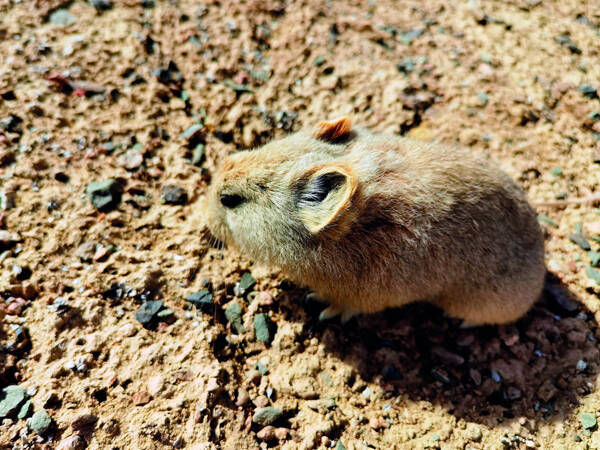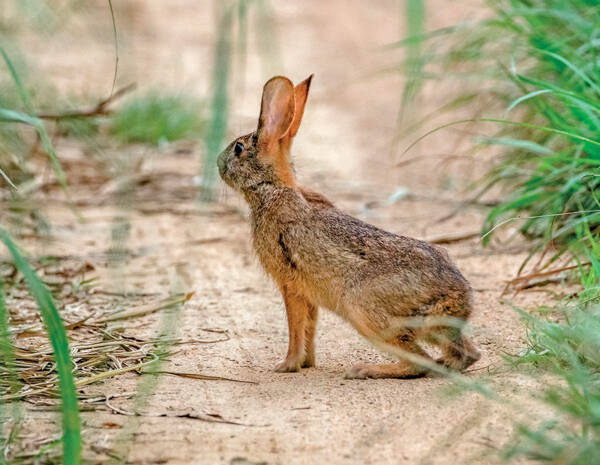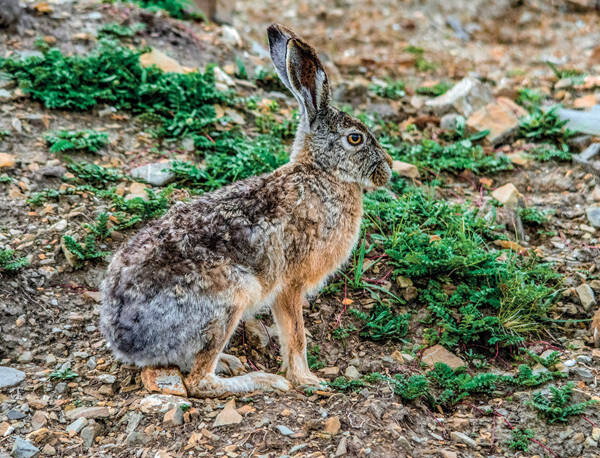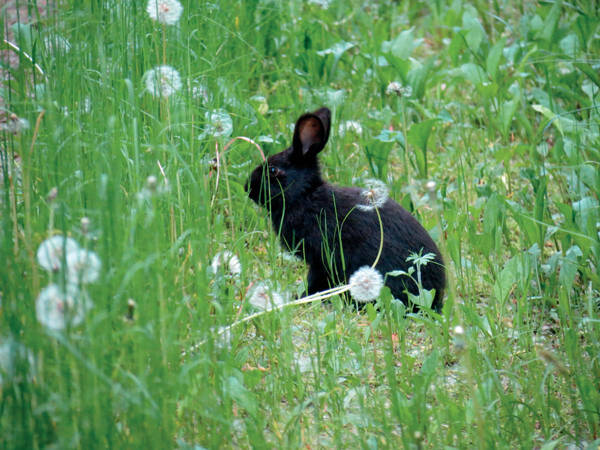Lepus tibetanus
IUCN
LCBasic Information
Scientific classification
- name:Lepus tibetanus
- Scientific Name:Lepus tibetanus,Tibetan hare, Tibetan hare, desert hare
- Outline:Lagoiformes
- Family:Lagomorpha Leporidae Lepus
Vital signs
- length:40-78cm
- Weight:1.6-2.5kg
- lifetime:5-7 years old
Feature
The fur color on the back varies, from sandy yellow and black in the summer to grayish brown or sandy brown in the winter as the fur thickens.
Distribution and Habitat
Distributed in Xinjiang, Inner Mongolia, and northern Gansu in China. Distributed abroad in Pakistan and Afghanistan.
Tibetan rabbits live in many different habitats, including shrub and grassland areas in habitats such as deserts, semi-deserts, and grasslands. Tibetan rabbits prefer to live in large open habitats like Tol's rabbits and other members of the rabbit family. They usually do not live in burrows. They stay under vegetation to keep cool. They build simple nests on the ground with different types of vegetation and sleep in these nests at night. The fur provides camouflage, which helps to hide them from predators.
Appearance
Large body, medium-sized ears, 80-110mm long. Slender body. Sandy yellow or yellow-brown back. Light gray hips. White outside of hind legs and front feet. Wide ears, with tufts of hair on the front edge. Black ear tips. Black in the middle of the back of the tail. Grayish white around the eyes. It is easy to be confused with the plateau rabbit. The difference from the plateau rabbit is that this species has medium ears, which are shorter than the length of the hind feet, but on average larger than 100mm; there are black stripes on the back of the tail, and the hair is long but not curly.
Details
The classification status of the Tibetan rabbit is very confusing. It was not until 1930 that it was considered an independent species. Later, it was listed as a subspecies of the plateau rabbit (<Lepus oiostolus>), and was also listed as a subspecies of the Mongolian rabbit (<Lepus tolai>) or the grass rabbit (<Lepus capensis>). Qu Jinhuang (1989) found through fuzzy clustering that the Pamir subspecies of the Tibetan rabbit (<Lepus tibetanus pamirensis>) is an independent branch different from the plateau rabbit, which indirectly proves that the Tibetan rabbit is an independent species. It lives in deserts, semi-deserts and dry grasslands.

Tibetan rabbits are herbivorous mammals that meet their nutritional and water needs by consuming a wide variety of plants. They primarily eat plant seeds, berries, roots, and twigs. Their incisors easily break down more fibrous materials such as roots and twigs. Atriplex is a common plant and an important part of its diet in climates with saline or gravelly soils. Atriplex is adapted to growing in saline or alkaline areas and is often the only plant that can tolerate these conditions. They can form large moss patches spanning thousands of meters, providing a large amount of food for the rabbits. Salt marshes grow in areas of high salinity and are adapted to tolerate salinity of up to 6% in the water. This suggests that the kidneys of Tibetan rabbits must be physiologically adapted to high salt intake.
Most Tibetan rabbits are non-territorial and do not mind sharing their home range with other rabbits. Depending on the availability of resources (a key factor in determining home range size), a single rabbit can occupy a home range of up to 4,500 acres. If resources are plentiful, Tibetan rabbits will not waste time and energy on any unnecessary long journeys. Foraging areas often overlap when food is plentiful enough.
Tibetan rabbits do not rely on their packs for safety. They become independent at a very young age and spend most of their lives alone. Social hierarchies can be seen during the mating season and sometimes even during dry times. Tibetan rabbits are mainly active at dawn and dusk. They can run up to 45 miles per hour and rely on their speed to avoid predators. Since Tibetan rabbits live in open areas and do not usually burrow, Tibetan rabbits must rely on speed and agility to avoid pursuers. They are also equipped with large eyes set laterally, which can detect moving objects in almost any direction due to their nearly circular field of vision. Their fur also provides camouflage. When they lie on vegetation, flattening and elongating their bodies, it allows them to blend in with their surroundings. This is very beneficial when the animal needs to rest or is trying to avoid physical exertion. Tibetan rabbits, as well as many other species of hares and rabbits, give warning signals when predators approach. They kick their hind legs to send a distress signal to warn other hares.
Tibetan rabbits are primarily solitary animals. They communicate with other rabbits during mating season and when they spot predators. They use touch and hearing to communicate, tapping their feet to warn of approaching danger. If other rabbits are nearby, they may hear the warning or feel vibrations in the ground. During the mating season, Tibetan rabbits secrete scent from special glands in the groin area and under the chin. They rub the scent secretions on their fur and rub on rocks and shrubs to deposit the scent. Males leave scent in feces and urine to mark the mating area. This repels younger males but attracts more dominant males. When this happens, males fight by kicking and punching, and the victorious male will stay in the breeding area. Similarly, the male mating scent also attracts females in estrus. Females track their urine and feces to advertise their reproductive status to males. Except for marking mating territories, Tibetan rabbits are generally non-territorial and do not compete for food or space.
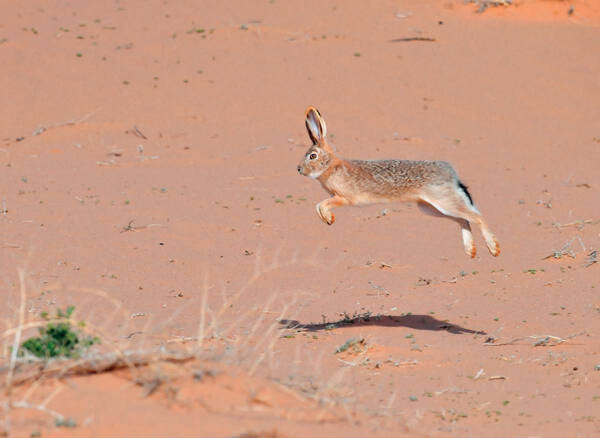
Tibetan rabbits' natural enemies include red foxes, Tibetan foxes, sand foxes, eagle owls, eagles, buzzards, kites, owls, etc.
Tibetan rabbits play many important roles in desert ecosystems. Their most important role is to provide a food source for desert carnivores. Tibetan rabbits are food for many raptors and small mammals, such as foxes. Animal dispersal of plant seeds is very important in desert habitats, and Tibetan rabbits play a role in this process. Tibetan rabbits often eat seeds and berries, and as they move around their territory and defecate, they spread the seeds to different areas for them to grow. Although uncommon, some Tibetan rabbits use burrows built by red and corsac foxes as a means of safety or to avoid the sun. Abandoned dens provide resting areas for animals during the day and are often used as entrances to burrows by small rodents, such as mice and gerbils. This communal behavior allows small mammals to benefit from their behavior.
The positive side of the Tibetan rabbit's economic importance: Tibetan rabbits tend to avoid human interaction in most situations. But humans still find ways to hunt them and gain economic, recreational, and even culinary benefits from them. Historically, humans have used Tibetan rabbits as an important food source and for the fur trade. Some Asian countries, such as China, have hunted Tibetan rabbits as a recreational sport. Tibetan rabbits also play an important role in seed dispersal. This contributes to plant diversity and even expands the range of some desert plants.
Listed in the IUCN Red List of Threatened Species in 2018 ver 3.1 - Least Concern (LC).

